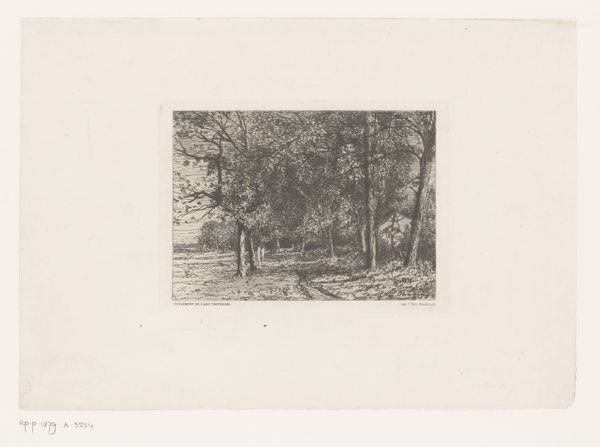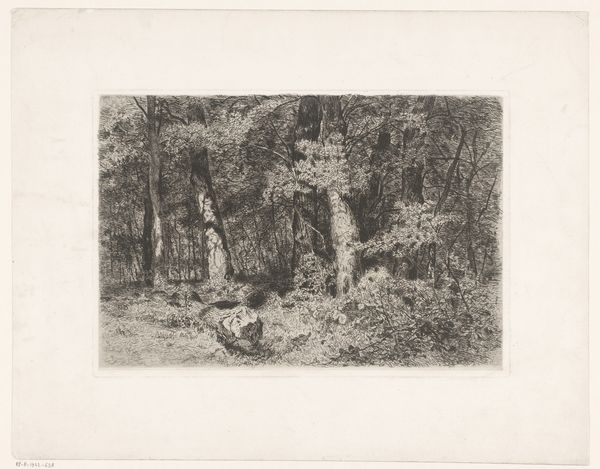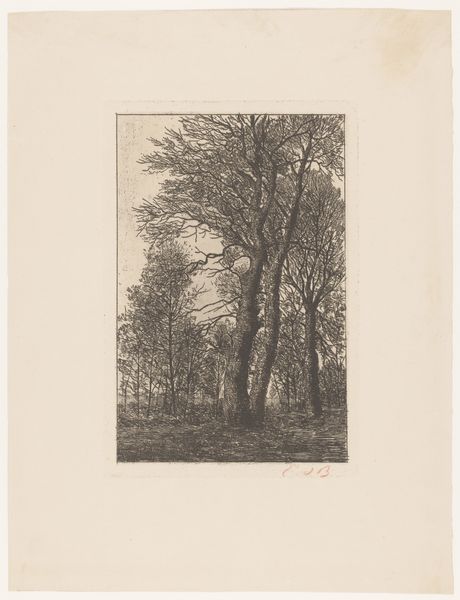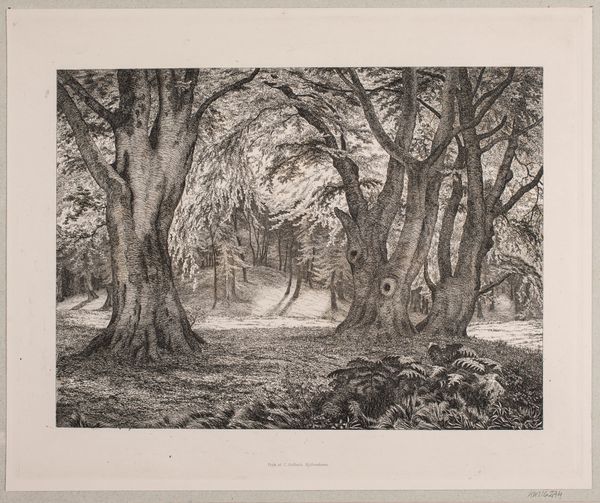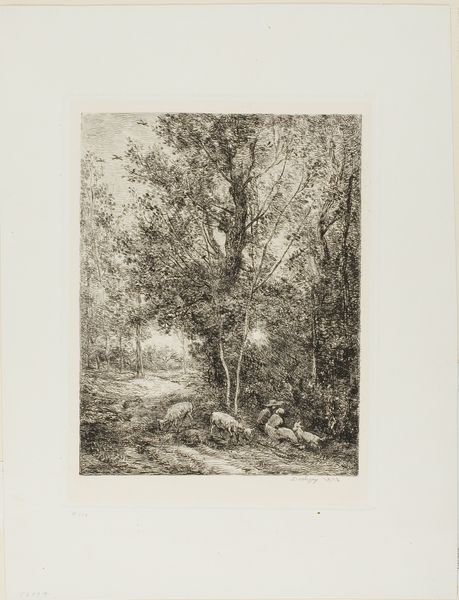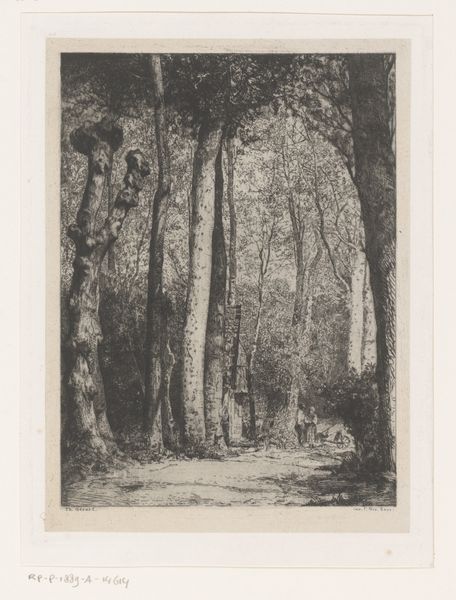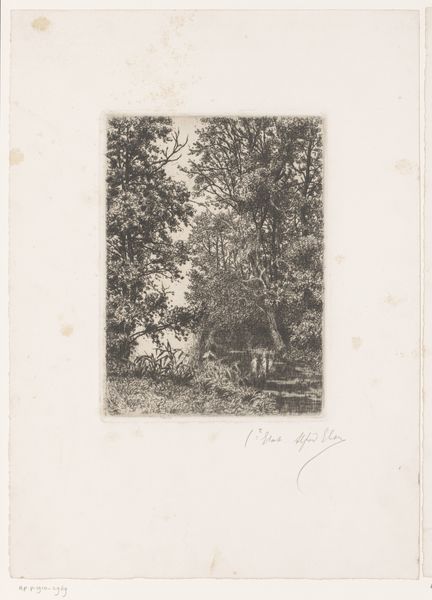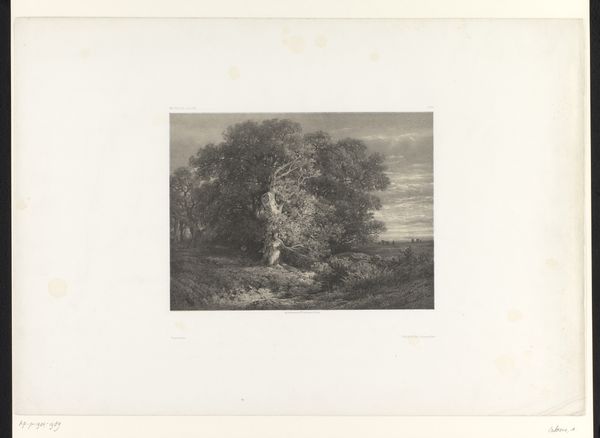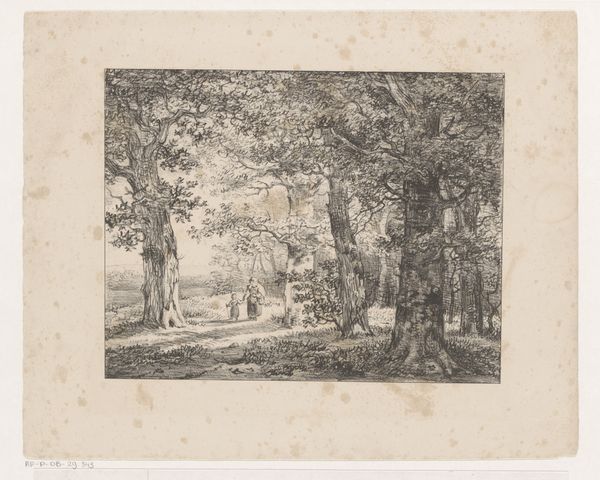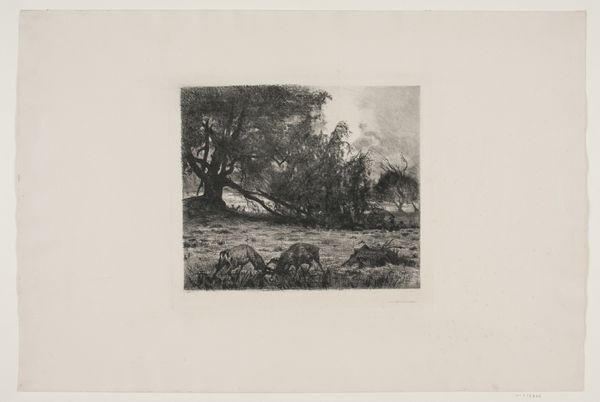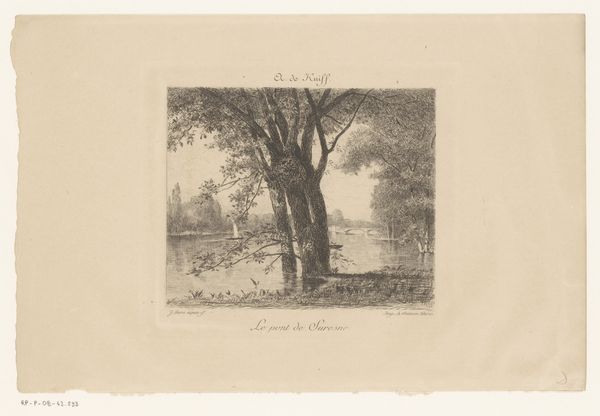
drawing, print, etching
#
drawing
#
dutch-golden-age
# print
#
etching
#
landscape
#
historical photography
#
line
Dimensions: height 198 mm, width 198 mm
Copyright: Rijks Museum: Open Domain
Editor: Here we have Adolphe van Weezel Errens's "Landschap met bomen," created sometime between 1876 and 1911. It’s an etching, so a print. It has this delicate, almost melancholic feel. What strikes you about this piece? Curator: The labor involved in etching—the deliberate scoring of the plate, the repeated acid baths—speaks volumes. What materials were available to Errens, and how did the technology of printmaking at that time dictate his style? Consider the socio-economic conditions that allowed for the creation and distribution of such a print. Editor: So you're thinking about how the process of etching itself influenced the final product? Did the tools he used even limit the sort of imagery he could depict? Curator: Exactly. Also, consider the audience. Prints were often more accessible than paintings. Was Errens consciously engaging with a wider public, democratizing the consumption of art through this medium? Is this landscape intended for an elite art collector, or the common person to contemplate? Editor: That's a really interesting point. So, the choice of etching directly impacts who gets to see and own this artwork. The production and distribution are part of the artistic statement, in a way. Curator: Precisely. We see that the medium is not neutral, but active, deeply shaping our engagement with art. I am also thinking about Dutch landscape tradition: how do his choices speak about relationship to nature as a resource or form of capital, at this moment in Dutch history? Editor: It gives me a lot to think about – not just what is shown, but *how* and *for whom*. Thanks! Curator: My pleasure. Remember, art doesn’t exist in a vacuum, it's always a product of its time.
Comments
No comments
Be the first to comment and join the conversation on the ultimate creative platform.
